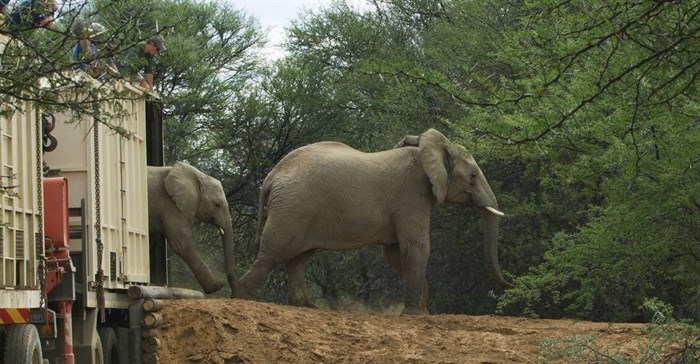A small herd of elephants have been introduced to the Samara Private Game Reserve - one of the most significant conservation areas in the Karoo - marking a conservation milestone as these animals return to their historic range. Once the herd, comprising a small family group of six elephants, have settled, they will be joined by a mature bull. Another small family group may be introduced, in time.

Image Supplied
Restoring a wildlife haven
Sarah and Mark Tompkins, owners of Samara Private Game Reserve, explain that when they first established the reserve in 1997, their aim was to restore the area to the wildlife haven it had been before species like cheetah, rhino, Cape lion, springbok and elephant were eradicated by early farmers and settlers.
“This is an extremely important area from an ecological point of view,” Sarah explains, adding that the Maputaland-Pondoland-Albany Thicket, where Samara’s 27,000 hectares of scenic wilderness is located, has been designated as one of the world’s 36 Global Biodiversity Hotspots.
Samara, the largest private game reserve in the Eastern Cape and comprising four vegetation biomes, acts as a crucial catalyst for protecting the delicate and diverse ecosystem of the Great Karoo, as the Tompkins work to create a system of corridors and partnerships that will result in the creation of the third largest protected area in South Africa.
African elephants currently in a state of crisis
As part of this, the reserve has long held the goal of reintroducing elephants back to the Plains of Camdeboo, made famous by Eve Palmer’s 1966 book of the same name, an ode to this semi-arid landscape. This goal was even more significant given that the population of African elephants is currently in a state of crisis, having declined by an alarming 30% in just 10 years.
Sarah cites the recent Great Elephant Census funded by Paul G. Allen, which shows that numbers continue to decrease because of poaching for ivory, human-wildlife conflict and habitat loss. To safeguard the future of the species there is a need to manage elephants as part of meta-populations – a group of spatially-separated populations between which translocations can take place to ensure genetic diversity and to establish founder populations in areas where elephants previously occurred but have since been eradicated – such as the Karoo.
“It’s a significant moment for so many reasons,” Sarah adds, “not least of which is the fact that the introduction is symbolically recreating ancient elephant migratory routes from the coast.”
The translocation of Samara’s elephants was undertaken by wildlife capture specialist Kester Vickery of Conservation Solutions, and was partially funded by the NGO Elephants, Rhinos & People and the Friends of Samara. It was also supported by Wilderness Foundation UK.














































